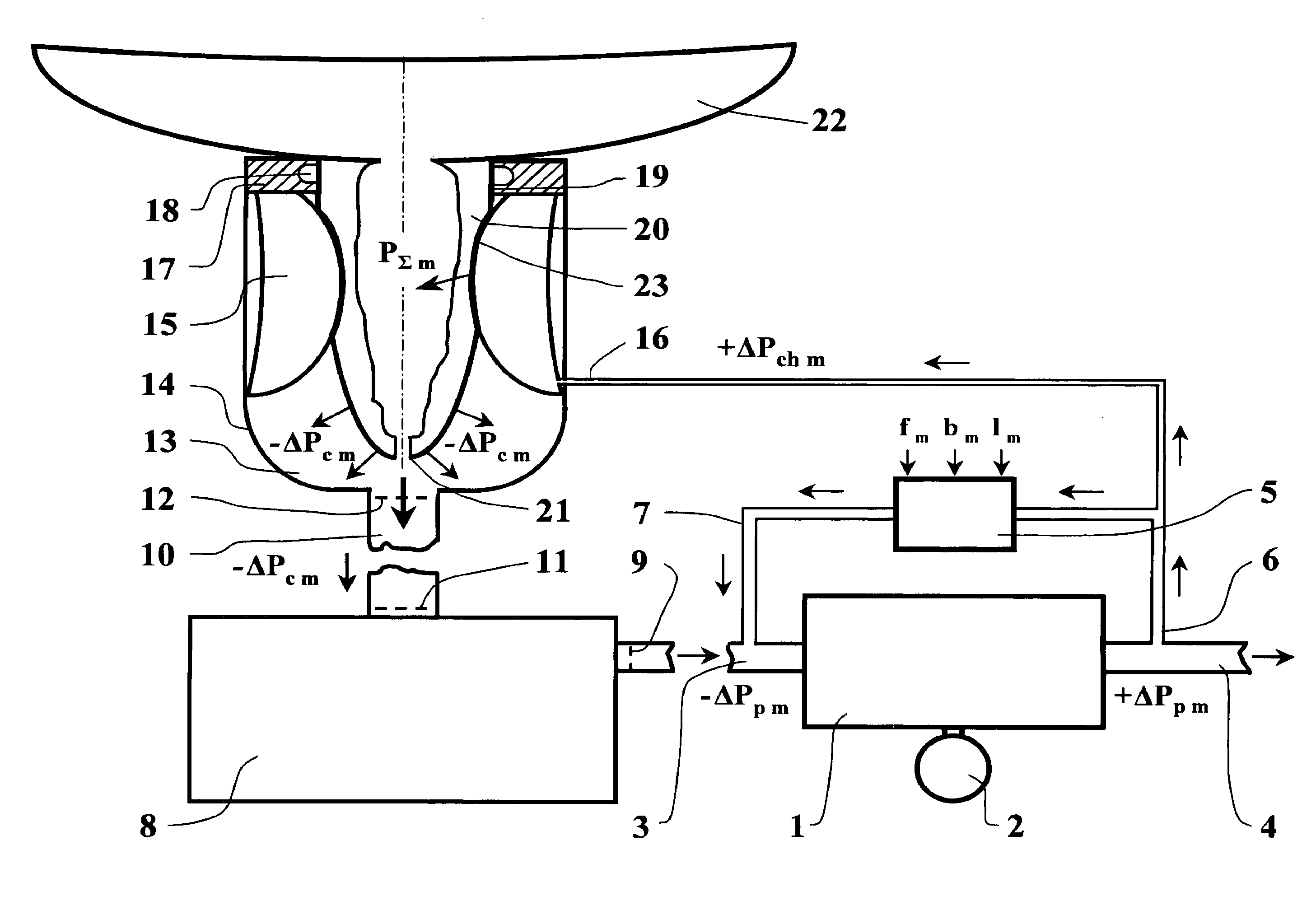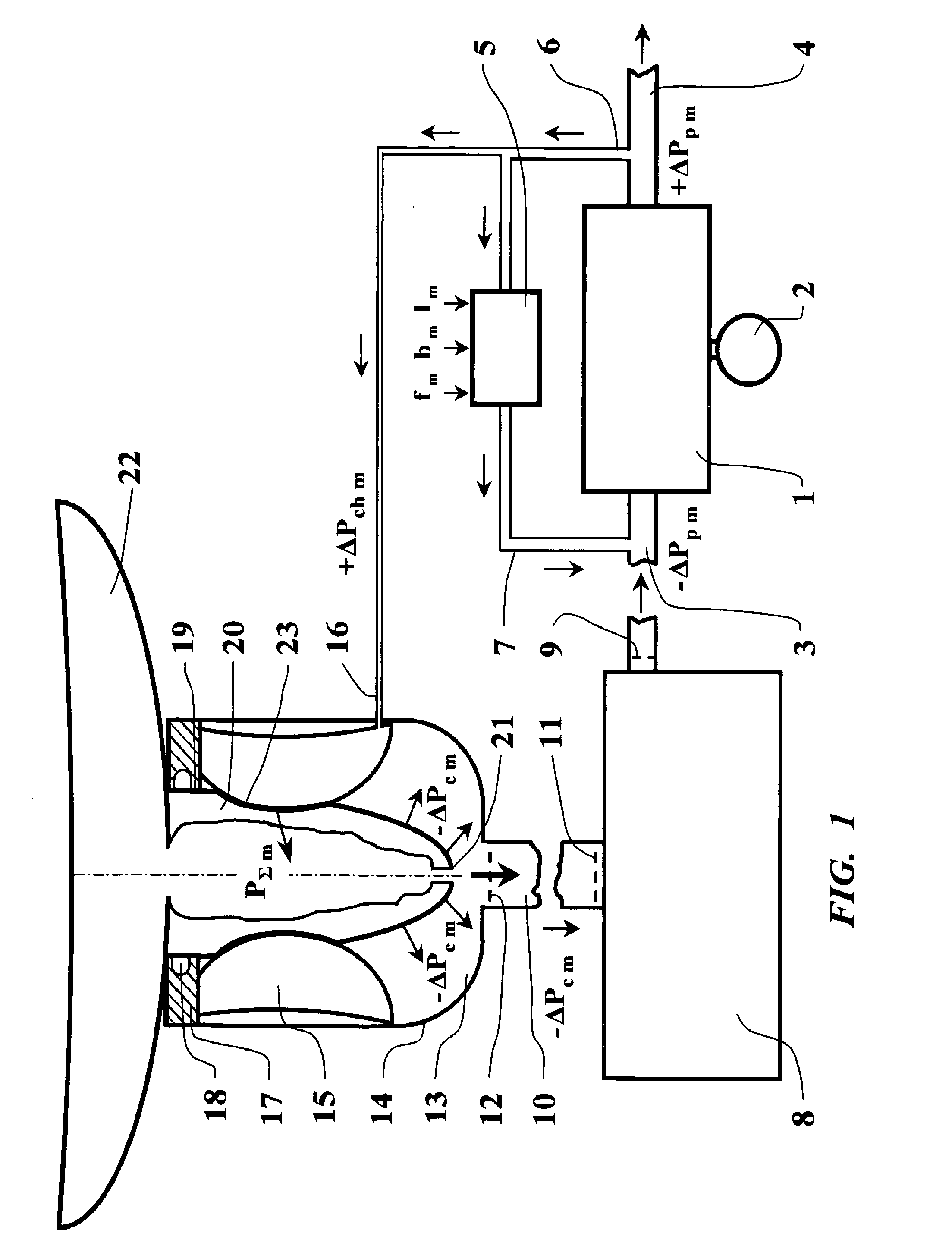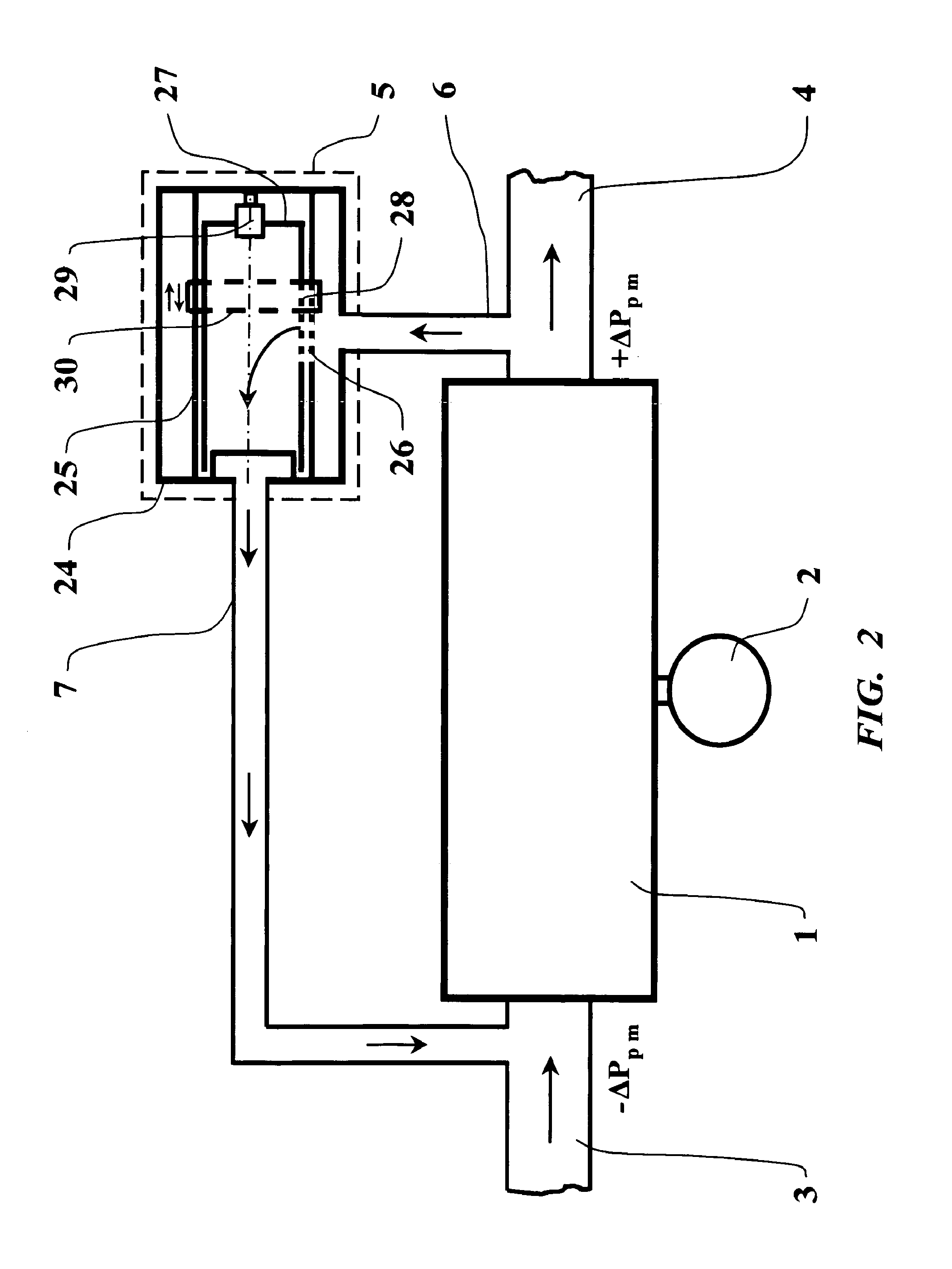The absence in said milking processes of a vacuum action on the milking teat, which periodically changes in-phase with said periodically changing mechanical action on the milking teat (in the main “milking phase” and in the “resting phase”) significantly worsens characteristics of milking efficiency with the use of said mechanical methods.
This reason and absence in a milking process of a periodic change of said “increased” vacuum action on the milking teat, and also the absence of periodical changing in-phase with its mechanical action on the milking teat, which is necessary for periodic organization in this process of the “milking phase” and “resting phase” causes serious physiological problems which accompany the known milking process.
These negative factors lead as a result to significant reduction of quality of milk and worsening of characteristics of efficiency of the realized milking process, for example the animal sickness level, the milking productivity and the
specific energy consumption of the milking process, which limits in principle the use of broad possibilities of the method in the milking industry.
Trying to technically imitate of the above mentioned “reference” natural milking process, carried out for example by a calf, this method is characterized by principally important process differences from it, which cause serious disadvantages of this traditional pulsating machinery of the milking method.
Therefore, during realization of the “milking phase” only constant and maximal substantially excessive in the magnitude vacuum acts on the milking teat, which predetermines and significantly worsens serious physiological problems described above in the analysis of the vacuum machinery milking method.
It is known that excessive vacuum which acts on the teat leads to affecting of the teat tissue, it can cause a discomfort due to substantial concentration of swellings in the milking teat and also causes pain for animal (cow), increases the probability of pulling the teat deeper into the teat cup, with compressing of the
udder, makes difficult or even blocks milk outflow causing an incomplete milking.
It also causes a production of stress
hormone (adrenaline), which in turn contributes to a significant worsening of quality of milk and impeding of
milk production.
However, simultaneously with this, a hydrodynamic shock action of the flow of milk on a “closure”, takes place, which is technically artificially created during closing of the lower part of the liner, which predetermines the possibility of a “reverse flow” of milk during milking.
During this step, increase of inner stresses development of “stagnation” processes of blocking of milk in these structures of
animal organs takes place, with a possible partial deterioration of its integrity.
Therefore, it is necessary to emphasize that the above described dynamic process (as in the previously analyzed “milking phase”) has a stress nature and leads to generation of stress
hormone, which in turn contributes to a significant worsening of quality of milk and leads to impeding of a
milk production.
Therefore, it can be summarized that the attempt to relax of the inter structures of the teat and
udder performed by the combination of actions on the teat in the “resting phase” of the pulsating milking process not only is simply low efficient, but also additionally causes a series of negative physiological processes.
In turn, these striking actions against the end of the teat can lead to its trauma, and also to a viral
inflammation and even decay.
These reasons can cause a
high probability of infection of these organs of animal and as result
mastitis or other known diseases.
The developers of the milking
system have to solve a complicated, practically irresolvable task to find an efficient compromise with selection of length of the other (also problematic) main component of the “milking phase”.
This substantially increases the total time process of milking and correspondingly its
specific energy consumption.
Moreover, the technical characteristics of the main structural components which are complicated, bulky, heavy and energy consuming in the milking
system, namely a liner and a pulsator which provide the all given characteristics of the milking process, significantly limit the possibility of maintaining and optimization of its dynamic parameters, (with consideration of physiological characteristics of the animal), for example a frequency of pulsation of the linear, a time and also law of its opening and closing, and also the laws of periodic changes of actions on the teat.
At the same time, for known reasons, the above mentioned frequency of pulsation of the liner in the milking
system which is practically given mainly within the limit 1 Hz, which is significantly different from known optimal frequency of calf sucking (reaching 2 Hz), additionally limits the efficiency of the realized machinery milking process.
Is it obvious that the above listed principal (methodological and process related) disadvantages and limited potential possibilities of the broad applied pulsating machinery milking method used in the milking industry, despite a hundred year of its intense expensive scientific and technological development, can not be efficiently minimized or completely eliminated due to the principal violations in the realized milking process of the physiological essence of the known “reference” natural milking process which is “pseudo-imitated” by this manner.
A relatively low milk-production and energy efficiency of this method accompanied by a high level of diseases in milking animals and relatively low quality of milk produced by it causes serious social, ecological and energy problems of a global nature.
They definitely include the necessity of maintaining of a significantly increased number of milking animals and a corresponding increase of number of animal-maintaining spaces, milking equipment, feeder base and additional transportation, and also expenses for utilization of additional wastes in milking industry, and as a result additional high quantity of used-
energy resources, additional annual multi-billion expenses for diagnostics and treatment of diseases in animals resulted from the milking process, etc.
As a result, the cost of the milk is significantly increased, in particular many times, the cost of
milk products is increased well, and also the efficiency of production is reduced in the milking industry and
food industry, with lower quality and increased cost of supplied milk.
 Login to View More
Login to View More  Login to View More
Login to View More 


